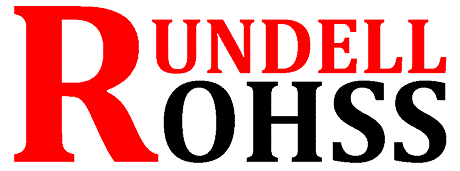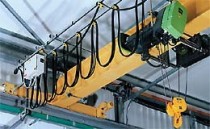
Lifting Equipment
Provision & Use of Work Equipment Regulations 1998
PUWER applies to any equipment which is used by an employee at work, from small hand tools to patient hoists and fork lift trucks. In general terms, the Regulations require employers to ensure that equipment provided for use at work is:
-
suitable for the intended use and for conditions in which it is used;
-
safe for use, maintained in a safe condition and in certain circumstances inspected so that it continues to be safe;
-
used only by people who have received adequate information, instruction and training; and
-
accompanied by suitable safety measures, e.g. protective devices, markings, warnings.
Where the risk assessment under regulation 3 of the Management of Health & Safety at Work Regulations (MHWR) has identified a significant risk to the operator or other workers from the installation or use of work equipment, the equipment should be inspected by a competent person:
-
at suitable intervals
-
each time that exceptional circumstances which are liable to jeopardise the safety of the equipment occur (e.g. serious damage, major modifications, etc)
If the safety of the equipment depends on the installation conditions, it should also be inspected after installation and before being put into service for the first time or after assembly at a new site or new location.
Lifting Operations & Lifting Equipment Regulations 1998
LOLER have specific requirements relating to work equipment which is used for lifting and lowering people or loads. This includes any attachments used to anchor, fix or support the lifting equipment and lifting accessories such as chains, slings, eyebolts, etc. They apply to equipment provided for use by people at work and this has implications for maintenance responsibilities in the home care situation.
The Regulations require the employer to ensure that lifting equipment is:
-
sufficiently strong, stable and suitable for the proposed use;
-
positioned or installed to prevent the risk of injury, e.g. from the equipment of the load falling or striking people;
-
visibly marked with any appropriate information, e.g. the safe working load, unique identifier.
-
Accessories such as slings and chains should also be marked with this information.
-
Additionally, the employer must ensure that:
-
Lifting operations are planned, supervised and carried out in a safe manner by competent people;
-
Lifting equipment used for lifting people is marked accordingly and safe for such a purpose;
-
Lifting equipment is thoroughly examined by a competent person, where appropriate, and a report of the examination submitted by the competent person to the employer; and
-
Lifting equipment is thoroughly re-examined if it is exposed to conditions (including wear and tear) which may cause deterioration and result in dangerous situations.
The intervals for thorough examination of lifting equipment and accessories in use are as follows:
-
Every six (6) months for lifting equipment for lifting people and lifting accessories.
-
Every twelve (12) months for lifting equipment used only for lifting loads; or, in either case.
-
At intervals specified in an examination scheme drawn up by the competent person to undertake the measures needed to comply with the requirements of the Regulations.
Lifting equipment should also be thoroughly examined:
-
After installation and before being put into use for the first time (this applies to permanently fixed, rather than mobile equipment).
-
After assembly and before being put into service at a new site or location.
-
Following exceptional circumstances which are liable to jeopardise the safety of the lifting equipment.
Reports of thorough examination should be kept for at least two years or until the next thorough examination and should be available for inspection.


